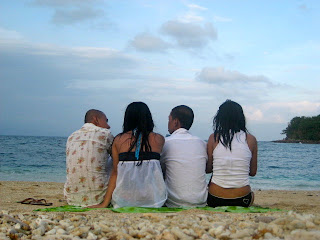Swim with the Butanding/WhaleShark.
MountMayon. with MicMac,Jepoy,Sigrid and my tatay as our Driver. Love u father.


The region is composed of six provinces, namely, Albay, Camarines Norte, Camarines Sur, Sorsogonand the island-provinces of Catanduanes and Masbate. It has one independent component city, Naga City, and six component cities - Iriga, Legazpi, Ligao, Masbate City, Sorsogon City, and Tabaco. Masbate City and Sorsogon City are cities within their namesake provinces.
The regional centers are Legazpi, the political and administrative center; and Naga City, the cultural, business and religious center. Together with Sorsogon City, they are the leading cities in the region in terms of urbanization and the hub of the economic activity.[1]
As of August 1, 2007, the population of the Bicol Region is 5,109,798 with Camarines Sur, the largest with a population of 1,693,821. Catanduanes is the least populated province with 232,757 people.
The total land area of Bicol Region is 17,632.5 km2 (6,807.9 sq mi) or 5.9% of the total land area of the country.[1] Camarines Sur is the largest province occupying 5,266.8 km2 (2,033.5 sq mi) or around 30% of the total, while Catanduanes is the smallest with only 1,511.5 km2(583.6 sq mi) or 8.6% of the total. Of the region's total land area, around 71% is alienable and disposable while the remaining 29% is public forest areas.
The region is bounded by Lamon Bay to the north, Pacific Ocean to the east, and Sibuyan Sea and Ragay Gulf to the west. The northernmost province, Camarines Norte, is bordered to the north by the province of Quezon, thereby connecting the region to the rest of Luzon.

The region is composed of six provinces, namely, Albay, Camarines Norte, Camarines Sur, Sorsogonand the island-provinces of Catanduanes and Masbate. It has one independent component city, Naga City, and six component cities - Iriga, Legazpi, Ligao, Masbate City, Sorsogon City, and Tabaco. Masbate City and Sorsogon City are cities within their namesake provinces.
The regional centers are Legazpi, the political and administrative center; and Naga City, the cultural, business and religious center. Together with Sorsogon City, they are the leading cities in the region in terms of urbanization and the hub of the economic activity.[1]
As of August 1, 2007, the population of the Bicol Region is 5,109,798 with Camarines Sur, the largest with a population of 1,693,821. Catanduanes is the least populated province with 232,757 people.
The total land area of Bicol Region is 17,632.5 km2 (6,807.9 sq mi) or 5.9% of the total land area of the country.[1] Camarines Sur is the largest province occupying 5,266.8 km2 (2,033.5 sq mi) or around 30% of the total, while Catanduanes is the smallest with only 1,511.5 km2(583.6 sq mi) or 8.6% of the total. Of the region's total land area, around 71% is alienable and disposable while the remaining 29% is public forest areas.
The region is bounded by Lamon Bay to the north, Pacific Ocean to the east, and Sibuyan Sea and Ragay Gulf to the west. The northernmost province, Camarines Norte, is bordered to the north by the province of Quezon, thereby connecting the region to the rest of Luzon.





















